
Introduction to Pacific Ocean Island Geography Reading and Assessment
- Subject:
- Cultural Geography
- Material Type:
- Reading
- Author:
- Jenoge Khatter
- Date Added:
- 05/23/2022

Introduction to Pacific Ocean Island Geography Reading and Assessment

This introductory course helps students learn to pose questions and analyze problems in the field of planning in developing countries. Not arguing for one "right" approach, the course draws on grounded empirical experiences - historical and recent - to help students navigate the way they approach their future work in developing-country governments, NGOs and international organizations.
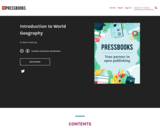
This pressbook is an Introduction to World Geography.
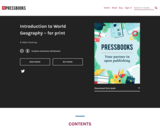
This pressbook is an Introduction to World Geography - for print.
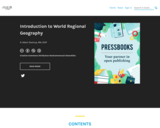
Word Count: 197795
(Note: This resource's metadata has been created automatically by reformatting and/or combining the information that the author initially provided as part of a bulk import process.)

Word Count: 204289
(Note: This resource's metadata has been created automatically by reformatting and/or combining the information that the author initially provided as part of a bulk import process.)

Boston strives for carbon neutrality by 2050, but faces hurdles with its reliance on fossil fuels. Buildings contribute most to emissions, driven by electricity and natural gas. Decarbonizing the grid and eliminating natural gas are vital for success. While progress has been made, meeting targets remains uncertain. Priorities include electrifying buildings, local energy planning, coastal resilience, and climate justice.

Short Description:
Every couple of years, an inspired group of people, led by the editors of AwaaZ Magazine (www.awazmagazine.com), organise a festival in Nairobi, Kenya, that goes by the name ‘SAMOSA’—South Asian Mosaic of Society and the Arts— bringing together different communities through art, music, dance, film and discussions. In 2016, during the 7th biennial event, included was a colloquium organised in collaboration with the Department of Literature of the University of Nairobi. This unique collection of essays considers the issues of citizenship, identity and belonging in Kenya through an examination of literature, film, music, and theatre, providing reflections on women, statelessness and refugees.
Long Description:
Every couple of years, an inspired group of people, led by the editors of AwaaZ Magazine (www.awazmagazine.com), organise a festival in Nairobi, Kenya, that goes by the name ‘SAMOSA’—South Asian Mosaic of Society and the Arts— bringing together different communities through art, music, dance, film and discussions. In 2016, during the 7th biennial event, included was a colloquium organised in collaboration with the Department of Literature of the University of Nairobi. This unique collection of essays considers the issues of citizenship, identity and belonging in Kenya through an examination of literature, film, music, and theatre, providing reflections on women, statelessness and refugees.
A pleasant quick read on a complex subject of citizenship, identity and belonging. Ignites an interest in these issues as expounded in the arts and film. —Dr George Gona, Senior Lecturer, Department of History and Archaeology, University of Nairobi.
This excellent compilation of papers by leading Kenyan academics, writers, public intellectuals and practitioners of various forms of art focuses on issues of citizenship, identity and belonging in literature, film, music and theatre. They cover a vast range of subjects that tell the story of Kenya’s past and present.
Ramnik Shah- ex-Kenyan lawyer who writes on migration and diaspora related subjects.
Word Count: 20200
(Note: This resource's metadata has been created automatically as part of a bulk import process by reformatting and/or combining the information that the author initially provided. As a result, there may be errors in formatting.)
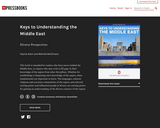
Diverse Perspectives
Short Description:
This book is intended for readers who have never studied the Middle East, or experts who may wish to fill gaps in their knowledge of the region from other disciplines. Whether for establishing or deepening one’s knowledge of the region, these fundamentals are important to know. The languages, cultural, religious and sectarian communities of the region, and selected turning points and influential people in history are starting points for gaining an understanding of the diverse contexts of the region.
Long Description:
This book is intended for readers who have never studied the Middle East, or experts who may wish to fill gaps in their knowledge of the region from other disciplines. Whether for establishing or deepening one’s knowledge of the region, these fundamentals are important to know. The languages, cultural, religious and sectarian communities of the region, and selected turning points and influential people in history are starting points for gaining an understanding of the diverse contexts of the region. It is based on introductory and graduate courses on the contemporary Middle East, which the Center’s director, Dr. Alam Payind, has been teaching for the past 30 years. The book’s co-author, Melinda McClimans, has taught these and other courses with him, as well as her own, for the past 15 years. The material is intended engage with diverse – even conflicting – cultural and historical perspectives, and ways of perceiving both Middle Eastern and world history from perspectives within the region. It is not intended to reinforce a monolithic or matter-of-fact perception of the region. For this and many other reasons, images are an important aspect of the knowledge presented. Each chapter starts with links to its image galleries, along with other visual aids and key elements.
Word Count: 28082
(Note: This resource's metadata has been created automatically as part of a bulk import process by reformatting and/or combining the information that the author initially provided. As a result, there may be errors in formatting.)

A unique perspective on the confluence of the three basic conceptual frameworks in human experience. Contains several studies, with data, of remarkable world views of disparate cultures based on their specific cultures language. The premise is that how people experience the world, then think about it, then create a language around it, alters their perception of the world in very fundamental ways. The radical notion is that thought and language, creates the circumstances of, and contribute to significantly different realities for different peoples.
The internalization and realization of this concept is significant and can possibly radically alter and change how different cultures assess their ability to, at the most basic levels, understand other cultures realities.

Short Description:
This lab manual is a cross-institutional project from British Columbia (BC), Canada that provides 24 labs to be implemented within first year post-secondary physical geography courses. The labs have been developed to be easily adapted for various course structures, durations, and differing laboratory learning objectives set out by instructors. Instructor notes are available for each lab that outline the instructional intent of the lab author, along with some suggestions for modifications. The lab manual is licenced under a creative common license (refer to licensing information) so that the lab modules can be modified as needed. The second edition of this lab manual was created for the onset of the 2021/22 academic year.
Long Description:
Physical geography lab exercises tend to be crafted for internal institutional use only. In light of the need to have online laboratory material for remote instruction, a group of geography instructors from across British Columbia (BC), Canada came together for this collaborative project with the goal of producing a cross-institutional open education resource (OER) laboratory manual for first-year post-secondary physical geography courses. The lab manual consists of 24 labs that cover an introduction to physical geography, weather and climate, biogeography, map and geospatial skills, hydrology, geomorphology, and landform identification. Many of the labs have a BC setting; however, they are useable across Canada and further abroad. The majority of the labs have been developed so that they can be done in any order to increase instructor flexibility and promote adaptability to differing course structures and durations. Many of the labs have students using live data, or built-in flexibility with datasets for instructors in order to prevent the lab exercises becoming static over time. The lab manual is licenced under a creative common license (refer to licensing information) so that the lab modules can be modified as needed by instructors to meet the learning outcomes of their students.
The second edition of this lab manual was created in the spring and summer of 2021 for the 2021/22 academic year and beyond. The second edition features substantial revisions to the labs and instructor notes for consistency and effectiveness, a reordering of the lab numbers, and two new labs (lab 07 and 19).
Word Count: 102946
(Note: This resource's metadata has been created automatically by reformatting and/or combining the information that the author initially provided as part of a bulk import process.)

Short Description:
This lab manual is a cross-institutional project from British Columbia (BC), Canada that provides 24 labs to be implemented within first year post-secondary physical geography courses. The labs have been developed to be easily adapted for various course structures, durations, and differing laboratory learning objectives set out by instructors. Instructor notes are available for each lab that outline the instructional intent of the lab author, along with some suggestions for modifications. The lab manual is licenced under a creative common license (refer to licensing information) so that the lab modules can be modified as needed. The second edition of this lab manual was created for the onset of the 2021/22 academic year.
Long Description:
Physical geography lab exercises tend to be crafted for internal institutional use only. In light of the need to have online laboratory material for remote instruction, a group of geography instructors from across British Columbia (BC), Canada came together for this collaborative project with the goal of producing a cross-institutional open education resource (OER) laboratory manual for first-year post-secondary physical geography courses. The lab manual consists of 24 labs that cover an introduction to physical geography, weather and climate, biogeography, map and geospatial skills, hydrology, geomorphology, and landform identification. Many of the labs have a BC setting; however, they are useable across Canada and further abroad. The majority of the labs have been developed so that they can be done in any order to increase instructor flexibility and promote adaptability to differing course structures and durations. Many of the labs have students using live data, or built-in flexibility with datasets for instructors in order to prevent the lab exercises becoming static over time. The lab manual is licenced under a creative common license (refer to licensing information) so that the lab modules can be modified as needed by instructors to meet the learning outcomes of their students.
The second edition of this lab manual was created in the spring and summer of 2021 for the 2021/22 academic year and beyond. The second edition features substantial revisions to the labs and instructor notes for consistency and effectiveness, a reordering of the lab numbers, and two new labs (lab 07 and 19).
Word Count: 104364
ISBN: 978-1-77420-209-8
(Note: This resource's metadata has been created automatically by reformatting and/or combining the information that the author initially provided as part of a bulk import process.)

Cases and Applications
Word Count: 117965
(Note: This resource's metadata has been created automatically by reformatting and/or combining the information that the author initially provided as part of a bulk import process.)

This course studies the interaction between law, courts, and social movements in shaping domestic and global public policy. Examines how groups mobilize to use law to affect change and why they succeed and fail. The class uses case studies to explore the interplay between law, social movements, and public policy in current areas such as gender, race, labor, trade, environment, and human rights. Finally, it introduces the theories of public policy, social movements, law and society, and transnational studies.

The primary purpose of this seminar is to enable students to craft approaches to so-called "First World"/ "Third World" city comparisons that are theoretically sophisticated, methodologically rigorous, contextually grounded, and significantly beneficial. Since there exists very little literature and very few projects which compare "First World" and "Third World" cities in a sophisticated and genuinely useful manner, the seminar is structured around a series of readings, case studies, and discussions to assist students in becoming mindful of the potential and pitfalls of comparative analysis, the types of data, the methods of analysis, and the urban issues or sectors which may benefit the most from such approaches. The course is designed to be interdisciplinary and interactive, and is geared towards masters and doctoral students.
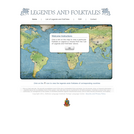
Video recreations that teach world legends and folktales will be enjoyed by all audiences.
Afghanistan - Eight Strands for Afghanistan; Albania - The Land of the Eagles; Algeria - The Legend of Tin Hinan; Angola - Kianda Takes a Bride; Azerbaijan - The Dove and Peace; Bolivia - The Legend of Chijchipa; Brazil - The Amazon River; Burma - Moguk - The Legend of the Rubies; Cambodia - The Tale of Thunder and Lightning; China - Journey to Dadu Marco Poso, The Silver Fish and The Great Wall.
Colombia - The Legend of Furatena; Djibouti - The Legend of Hadal Mahiss; DRC - The Kingdom of Kongo; Egypt - Cleopatra; Eritrea - Queen of Sheba; Ethiopia - The Lion's Whisker; Georgia - The Pheasant of Tbilisi; India - Taj Mahal; Indonesia - The Legend of Merong Mahawangsa; Iran - The 1001 Nights; Iraq - Abul Abbas the Elephant; Israel - Solomon the Wise King; Ivory Coast
The Legend of Queen Pokou.
Japan - The Naming of Mount Fuji; Kazakhstan - The Legend of the Dombra; Kenya - The Spirit Wife; Kurdistan - Legend of Zembilfiroz; Kuwait - Mariam and Salim: Defenders of Kuwait; Lebanon - Cadmus The First Teacher; Liberia - The Chief's Wise Wife; Libya - The Legend of Cyrene; Mali - The Lost Manuscripts of Timbuktu; Mexico - The Lengend of Popocateptl & Iztaccihuatle; Mongolia- The Camel and the Rat; Morocco - The Legend of the Almond Tree; Nepal -Boudhanath; Nigeria - Bayajidda; North Korean - The Legend of Tangun; Oman - The Frozen Dates.
Philippines - The Legend of Apo Lakay-Lakay, The Chocolates Hills of Bohol Island, Legend of Alitaptap and the Fireflies; Poland - The Mermaid of Warsaw; Portugal - The Rooster from Barcelos; Saudi Arabia - Poetry in Pre-Islamic Arabia Qays and Layla, Poetry in Pre-Islamic Arabia Antara and 'Abla; Serbia - Marko - Hero and King; Somalia - The Camel in the Sky; Syria - How the West Was Won by the Arabs; Thailand - Ta-in and Ta-na; Tunisia - Queen Ellissar, The Punic Wars; Turkey - Troy; Turkmenistan - Sultan Sanjar and the Fairy; UAE - The Milk Container; Uzbekistan - How Samarkand Got Its Name; Venezuela - The Five White Eagles; Vietman - The Legend of Betel: Cao Tan and Cao Lang; Yemen - The Discovery of Coffee.
![Lenses of Vietnam: Protest in a Democracy [Inquiry Design Model (IDM) Unit Plan]](https://img.oercommons.org/160x134/oercommons/media/courseware/lesson/image/22Photograph_of_a_Female_Demonstrator_Offering_a_Flower_to_a_Military_Police_Officer22_by_Albert_R._Simpson_uOQkEc8.gif)
This inquiry takes students through an analysis and evaluation of the Compelling Question “Is protest important in a democracy?” using the Vietnam War as a lens to approach the topic. To accomplish this, students will become more media literate through evaluating sources, biases, perspectives, and the goals of creating media. Throughout the inquiry, students will engage in activities designed to promote and develop media literacy while analzying the Compelling Question and learning about the historical protests of the Vietnam Era.This inquiry is expected to take two weeks (10 periods) to complete: one 45-minute class period to stage the question, introduce the inquiry, and to review media literacy; two 45-minute class periods for each of the three supporting questions; and then three 45-minute class periods for students to write and research their argumentative thesis. If students are as of yet less familiar with media literacy, the instructor should add at least another class period, or more, introducing them more fully to this.The full unit, along with all materials and resources, is available as a PDF attachment.
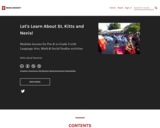
Modular lessons for Pre-K to Grade 3 with Language Arts, Math & Social Studies activities
Word Count: 2227
(Note: This resource's metadata has been created automatically as part of a bulk import process by reformatting and/or combining the information that the author initially provided. As a result, there may be errors in formatting.)

October 1915–April 1918
Word Count: 41743
(Note: This resource's metadata has been created automatically by reformatting and/or combining the information that the author initially provided as part of a bulk import process.)

Linguists take it for granted that all languages, including languages in the Global South, are worthy of study. Yet some 40% of children in the world are prevented from studying in and valorizing their home languages—including some of the very languages that linguists study with such fondness. So much research in linguistics and the benefits thereof remain inaccessible to the bulk of the very speech communities whose languages linguists study. This seminar examines efforts by linguists and educators to make their research more inclusive, accessible, and hospitable, and to reduce linguistic-discrimination practices in various communities world-wide.